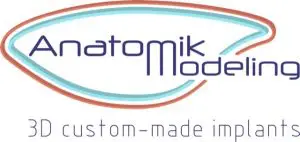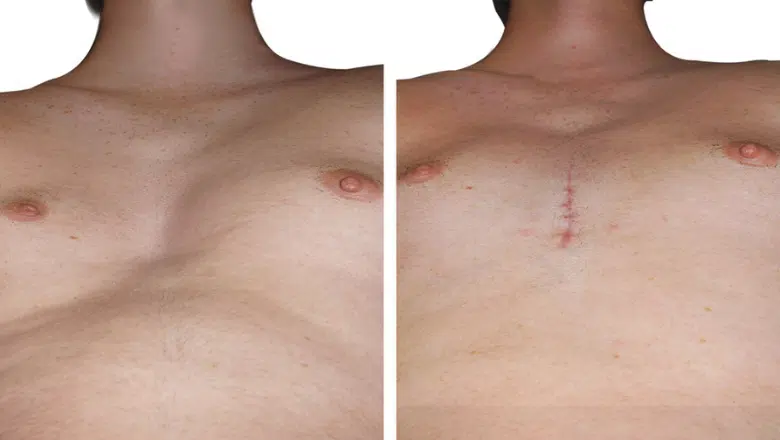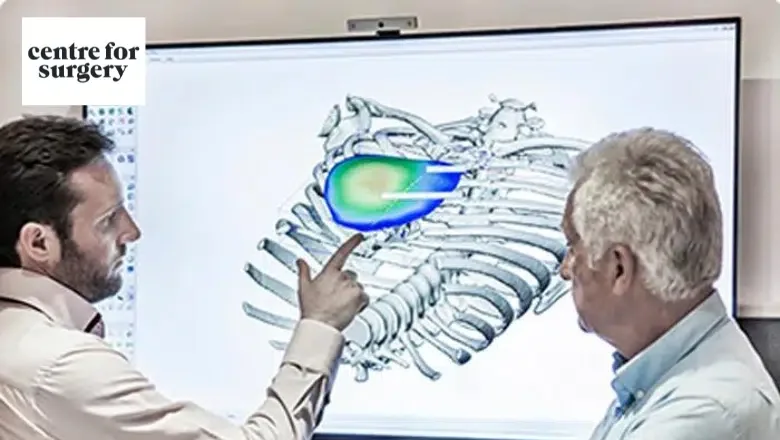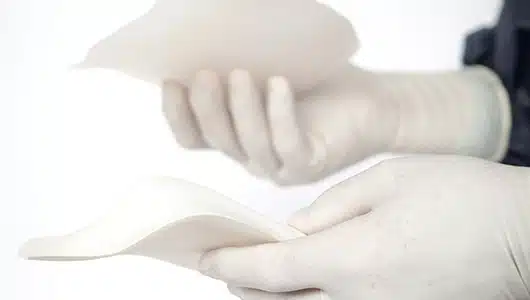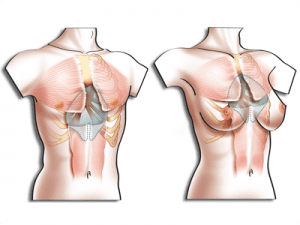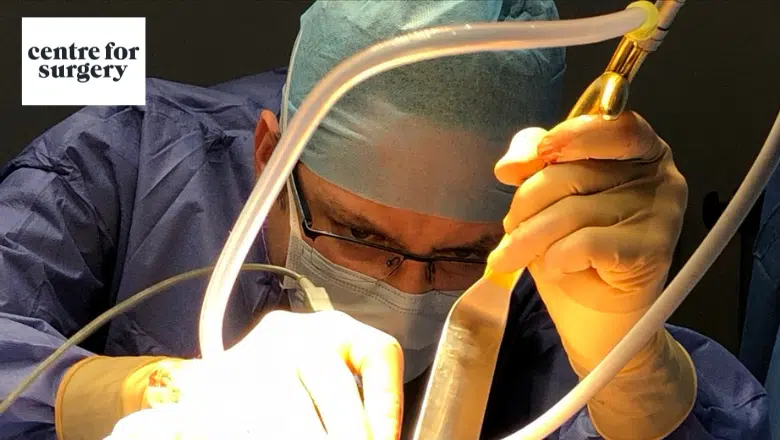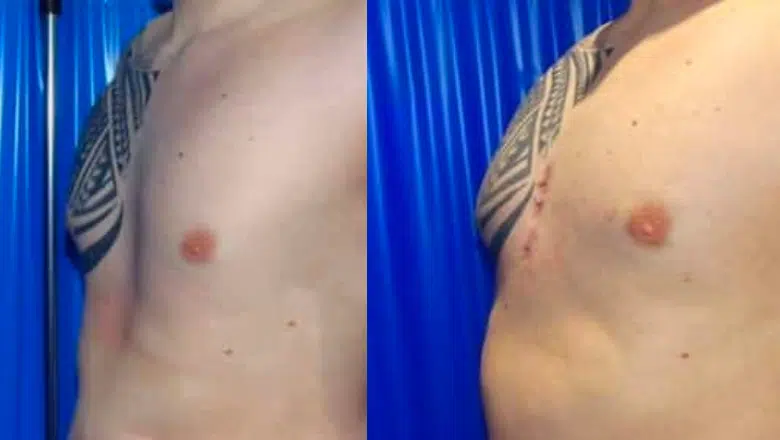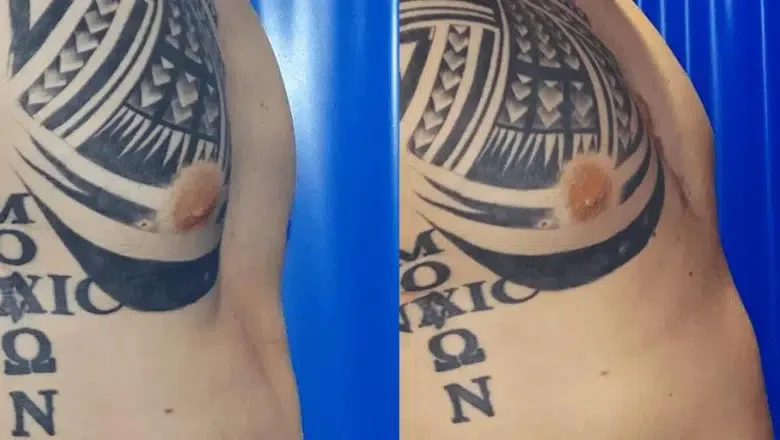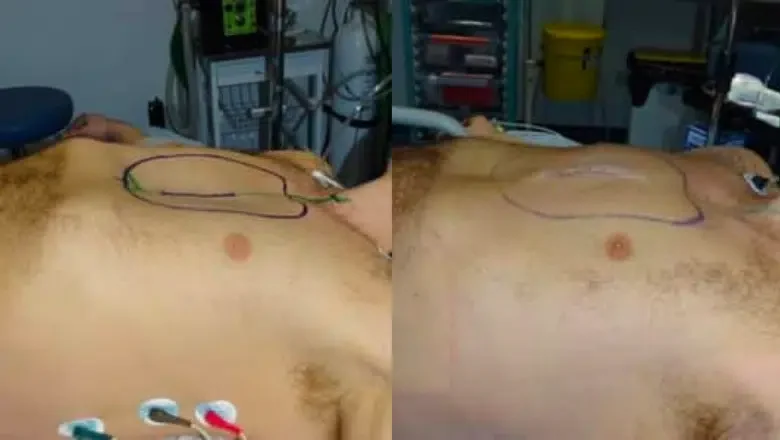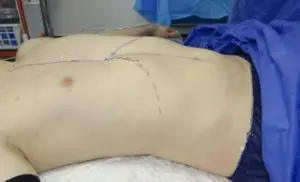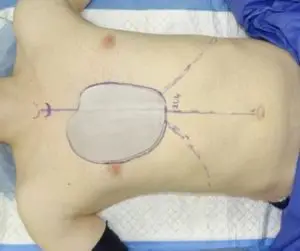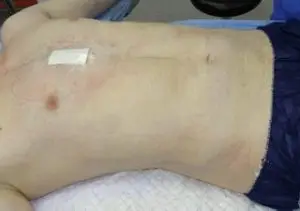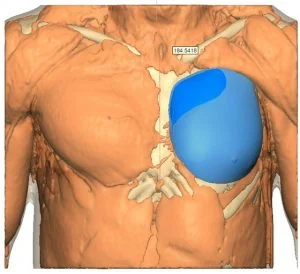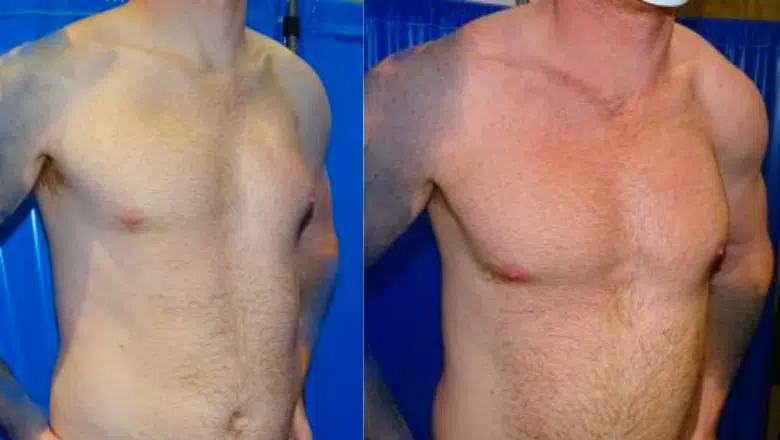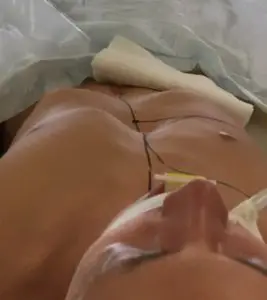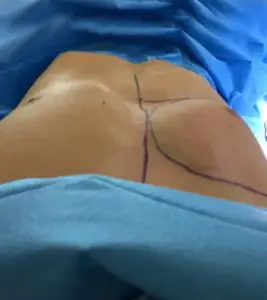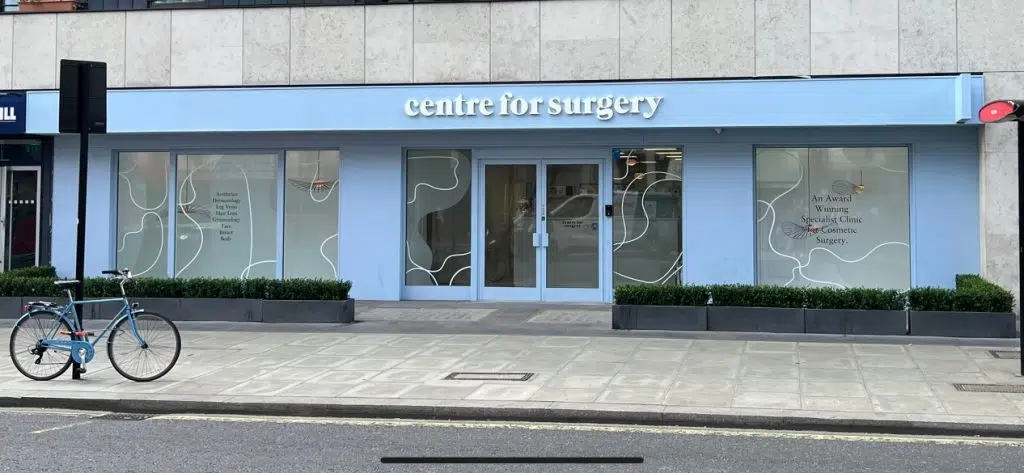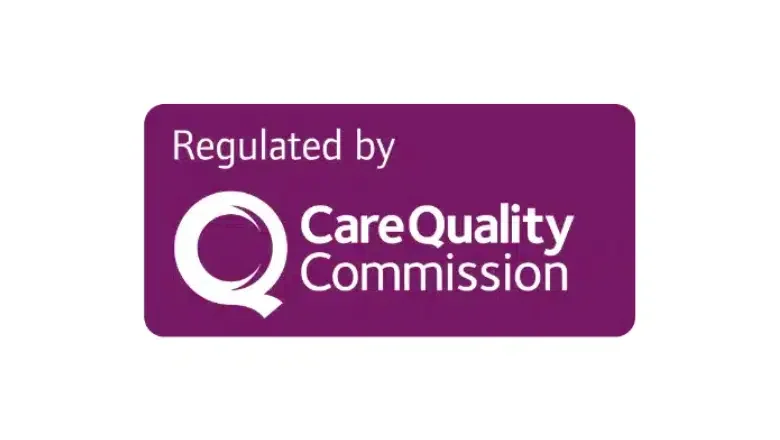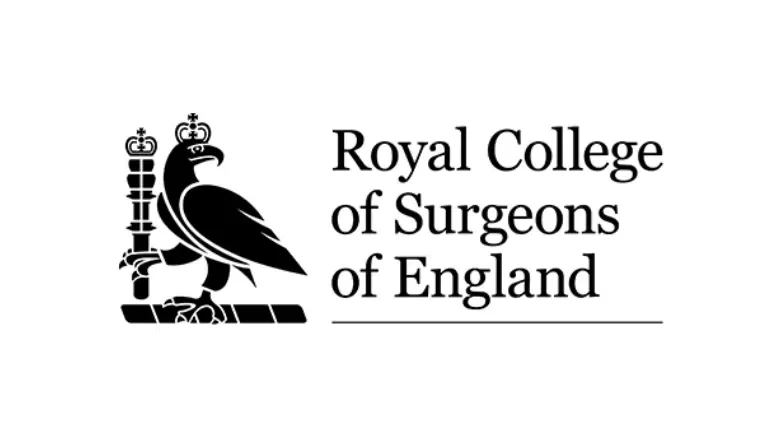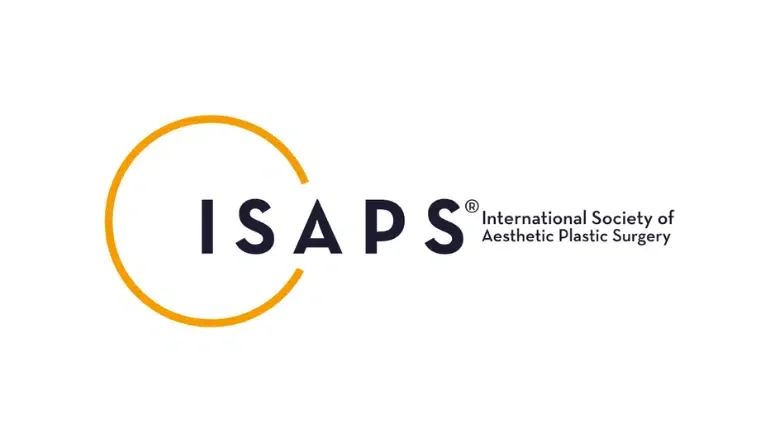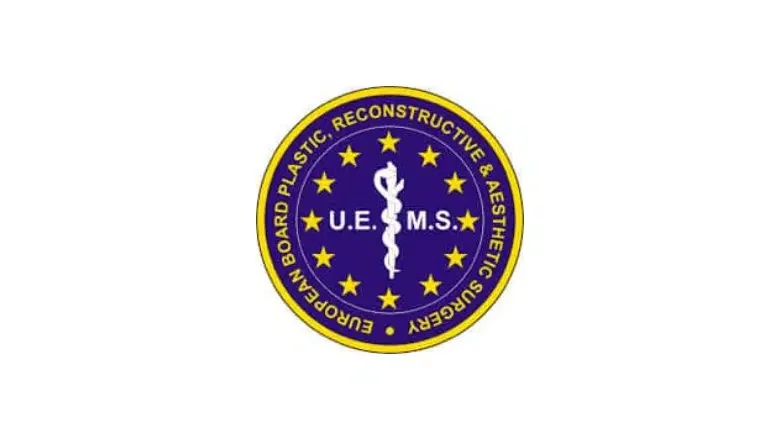3D custom implants for Pectus Excavatum and Poland Syndrome
Experience a transformative solution for pectus excavatum and Poland syndrome with our custom 3D chest wall implants, expertly designed to restore confidence and enhance quality of life
3D custom-designed implants offer an innovative approach to treating chest wall deformities associated with pectus excavatum and Poland syndrome. By leveraging advanced imaging techniques and 3D printing technology, these personalised implants provide a tailored solution to address the unique anatomical needs of each patient, ultimately improving both cosmetic and functional outcomes.
RELATED: Pectoral Implants Before & After Photos
Pectus excavatum, commonly known as “funnel chest,” is a congenital condition that results in a sunken or concave appearance of the chest wall. On the other hand, Poland syndrome is a rare birth defect characterised by the underdevelopment or absence of the pectoralis major muscle on one side of the body, often accompanied by other abnormalities in the chest, arm, or hand.
Traditional treatments for pectus excavatum, such as the Nuss or Ravitch procedures, involve invasive surgical techniques to correct the chest wall deformity. For Poland syndrome, treatments may include muscle or tissue transfer techniques to reconstruct the chest wall and address associated anomalies. While these approaches can be effective, they come with certain risks and may not always lead to optimal cosmetic results.
3D custom-designed implants provide an alternative solution, offering several advantages over traditional surgical techniques:
Personalised fit
Custom implants are created based on the patient’s unique anatomy, using medical imaging techniques like CT scans to capture the precise dimensions and contours of the chest wall. This ensures a perfect fit and can lead to better cosmetic and functional outcomes.
Minimally invasive
The insertion of custom implants typically involves a smaller incision and less disruption of the surrounding tissues compared to more invasive surgical procedures. This can result in faster recovery times and a lower risk of complications.
Aesthetic improvement
Custom implants can help restore a more natural and symmetrical appearance to the chest, potentially enhancing self-esteem and confidence in patients with pectus excavatum or Poland syndrome.
Reversible and adjustable
Custom implants can be easily adjusted or removed if the patient’s needs or preferences change over time, providing a level of flexibility not always available with traditional surgical treatments.
Centre for Surgery is an approved partner of Anatomik Modelling
AnatomikModeling is a cutting-edge company specialising in designing and developing tailor-made implants precisely crafted to fit each patient’s unique anatomy, offering a minimally invasive treatment solution for conditions such as Pectus Excavatum and Poland Syndrome.
The state-of-the-art approach of creating custom-made 3D implants for thoracic deformities has emerged as a robust alternative to traditional orthopaedic techniques. This innovative method delivers superior morphological results while significantly reducing the risks associated with more invasive procedures and facilitating a quicker recovery for the patient.
AnatomikModeling’s success and expertise stem from a decade-long collaboration with Toulouse University Hospital, combining the best of advanced reconstructive surgery techniques with the latest in 3D modelling technology. This partnership has enabled the development of highly accurate and patient-specific implants, revolutionising the treatment of chest wall deformities and setting a new standard in patient care.
Centre for Surgery is proud to have had a long-standing collaboration with Anatomik Modeling for over six years. Our surgeons have carried out over 60 chest wall implant procedures at our state-of-the-art specialist plastic surgery clinic in London. This makes us the most experienced surgical unit in the UK for custom-designed 3D chest wall implants.
What is Pectus Excavatum?
Pectus excavatum is the most common chest wall deformity, affecting approximately 1 in 400 people. It occurs more frequently in males than in females and can be present at birth or become more noticeable during adolescence when rapid growth occurs.
The severity of pectus excavatum varies from person to person. In mild cases, it may only cause cosmetic concerns, while in more severe cases, the inward compression of the chest can lead to:
Reduced lung capacity
The sunken chest can compress the lungs, leading to reduced lung capacity and difficulties in breathing, especially during physical activities.
Heart displacement and compression
Pectus excavatum can also cause the heart to be displaced and compressed, potentially affecting its function and leading to chest pain or palpitations.
The exact cause of pectus excavatum is not well understood, but it is believed to result from abnormal growth and development of the costal cartilages. The condition can also have a genetic component, as it can run in families.
Traditional treatment options for pectus excavatum depend on the severity of the condition and the presence of any associated symptoms. Sometimes, no treatment is needed, and the individual can be monitored over time. In other cases, treatment may include:
Physiotherapy and exercises
These can help strengthen chest muscles and improve posture, which may alleviate some symptoms.
Bracing
In some mild to moderate cases, a chest brace may be used to apply external pressure on the chest wall and help correct the deformity.
Surgery
In more severe cases, surgical procedures like the Nuss procedure (minimally invasive) or the Ravitch procedure (more invasive) can be used to correct the chest wall deformity and alleviate symptoms.
3D custom-made implants have now revolutionised the treatment of pectus excavatum.
Pectus Excavatum Implants Before & After
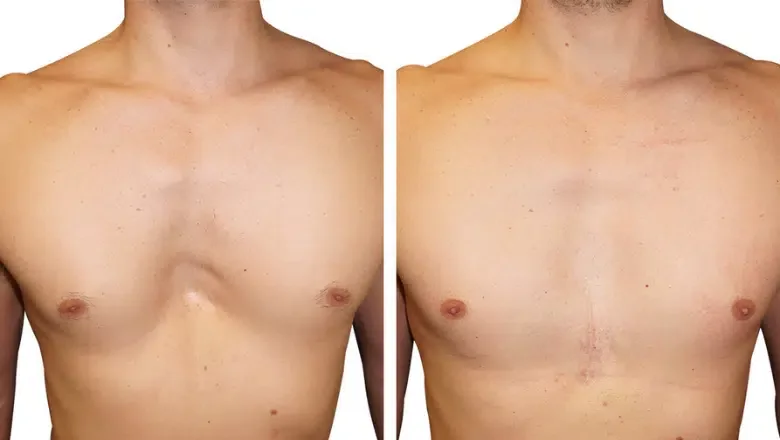
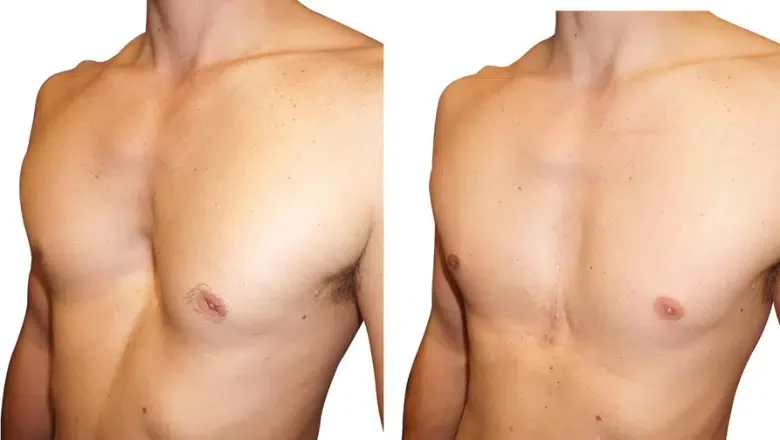

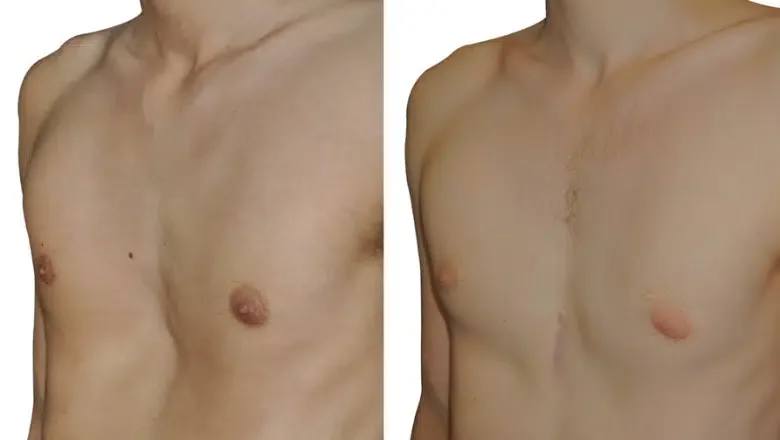
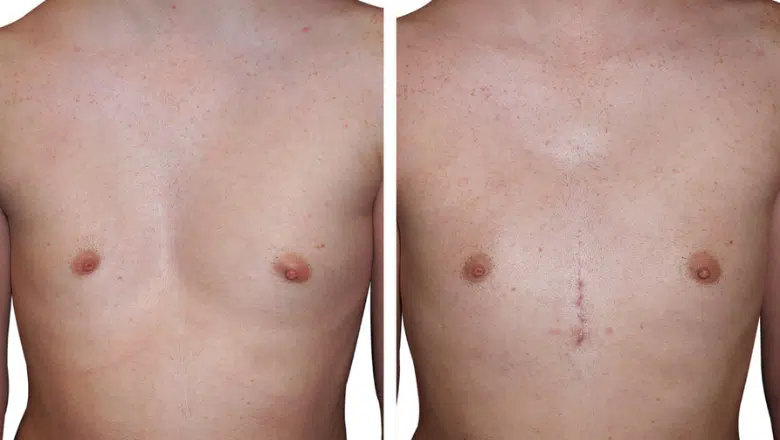
What is Poland syndrome?
Poland syndrome is a rare congenital condition characterised by the underdevelopment or absence of the pectoralis major muscle, which is the large chest muscle responsible for moving and stabilising the shoulder joint. The condition typically affects one side of the body, most commonly the right side, and is more prevalent in males.
RELATED: What is Poland Syndrome?
In addition to the pectoralis major muscle abnormalities, Poland syndrome can also be associated with other anomalies, such as:
Rib cage deformities
Missing or underdeveloped ribs on the affected side can lead to an asymmetrical appearance of the chest wall.
Breast and nipple abnormalities
In females, there may be underdevelopment or absence of the breast and nipple on the affected side.
Brachysyndactyly
This term refers to the shortening of the fingers and the fusion of the bones in the hand, which can occur on the same side as the affected pectoralis major muscle.
Arm and shoulder abnormalities
There may be underdevelopment or malformation of the arm and shoulder muscles and bones on the affected side.
The exact cause of Poland syndrome is not well understood, but it is thought to involve a disruption of blood flow during embryonic development, which leads to the underdevelopment or absence of the pectoralis major muscle and associated anomalies.
Poland syndrome is typically diagnosed based on the physical appearance and characteristics of the affected individual. In some cases, imaging techniques such as X-rays, CT scans, or MRI can be used to further assess the extent of the abnormalities.
Treatment for Poland syndrome varies depending on the severity of the condition and the specific abnormalities present. Some individuals may not require treatment, while others may benefit from the following options:
Physiotherapy and occupational therapy
These therapies can help improve function, strength, and range of motion in the affected arm and shoulder.
Prosthetics or orthotics
In some cases, prosthetic devices or orthotics can help improve function and appearance.
Surgical intervention
Surgery may be performed to reconstruct the chest wall, address breast or nipple abnormalities, or correct hand and arm deformities. This can include using custom implants, muscle or tissue transfer, or other reconstructive techniques. 3D custom-designed implants offer a superior solution to address chest wall deformity without the need for more invasive surgery.
Pectus excavatum
Pectus excavatum treatment corrects the shape of the bone in the middle chest, namely the congenital deformity of the sternum. Pectus excavatum, most commonly known as funnel chest, is a deformity of the thorax that is marked by the median or lateral depression of the sternum. Nearly 1 to 2% percentage of the population is affected by pectus excavatum, being more common in boys than in girls. It is one of the most common types of congenital chest wall abnormality, with an estimated occurrence in between 1 and 300 and 1 and 100000 births.
Thoracic custom-made pectus implants with CAD technology is the solution used for pectus excavatum. At present, it is used as a benchmark procedure at Centre for Surgery because it is easy and reliable. What these pectus implants do is compensate for the congenital deformation. This innovative technique can also help correct breast deformity and asymmetry. Thanks to 3D technology, significant complications are avoided altogether when compared with traditional major thoracic surgery.
These are the long-term results of treatment for pectus excavatum:
- The aesthetic outcome is polished. The edges of the custom-made implantable prosthesis are concealed.
- Setting up the 3D implant is easy. The 3D reconstruction fits perfectly into the patient’s anatomy.
- Low risk of haematoma
- Little pain that can be treated with analgesics so the patient can be comfortable and functional
- Management of complex cases
- Improved exercise tolerance
Benefits of custom implants for pectus excavatum and Poland syndrome
Pectus excavatum and Poland syndrome are two separate congenital conditions that can result in chest wall deformities. Pectus excavatum leads to a sunken or concave chest wall, while Poland syndrome is characterised by the absence or underdevelopment of chest muscles, usually on one side of the body, and sometimes accompanied by other abnormalities in the hand or arm. Custom implants can be designed to correct the chest wall deformities caused by these conditions.
Here is a detailed list of potential benefits associated with custom implants for patients with pectus excavatum and Poland syndrome:
Aesthetic improvement
Custom implants can help restore a natural and symmetrical appearance to the chest, which may enhance the patient’s self-esteem and confidence. This is particularly important for individuals with Poland syndrome, who may have a noticeable asymmetry in their chest wall.
Personalised fit
Custom implants are designed based on the patient’s unique anatomy, using medical imaging techniques like CT scans and 3D printing technology. This ensures a precise fit, which can lead to better outcomes and higher patient satisfaction.
Minimally-invasive
Compared to traditional surgical treatments like the Nuss or Ravitch procedure for pectus excavatum, and muscle or tissue transfer techniques for Poland syndrome, custom implants are less invasive. They are typically inserted through a small incision, which leads to faster recovery times and a lower risk of complications.
Preserving chest wall function
Custom implants can help maintain or improve chest wall function by providing support and a more natural appearance without significantly altering the underlying structure. This can be particularly beneficial for individuals with Poland syndrome, who may already have compromised chest wall function due to underdeveloped muscles.
Reversible and adjustable
Custom implants can be removed or adjusted if the patient’s needs or preferences change over time, providing a level of flexibility not always available with more invasive surgical treatments.
Reduced pain and discomfort
As custom implants are less invasive than other surgical options, patients may experience less postoperative pain and discomfort, leading to a more comfortable recovery.
Shorter hospital stay
Due to the less invasive nature of custom implant procedures, patients may require a shorter hospital stay compared to more invasive surgical options, which can be both more convenient and cost-effective.
Ideal candidates for pectus implants & Poland Syndrome implants
Pectus excavatum treatment is reserved for people who are not happy with the way their chest looks and are, thus, concerned with their body image. To be more precise, the surgical procedure addresses young people as well as adults who suffer from psychological discomfort. The treatment equally addresses people who have trouble exercising due to shortness of breath. The heart or lung function is not affected, but there have been peculiar cases.
Anyone struggling with Poland Syndrome is encouraged to make an appointment at Centre for Surgery for a consultation. Please remember that the recommended age for this procedure is different for boys and girls. Due to breast development, young women are advised to until their chest area is fully developed before surgery, while boys can undergo the procedure starting at age 13. Although this defect does not cause any health abnormalities or impair movement, it is a major aesthetic concern for people who suffer from it, affecting their self-confidence and body image
Patients like the ones mentioned above make good candidates for chest wall implants. Besides having the desire to improve the appearance of the chest, it is necessary to be in good health. To be more precise, patients should not have major medical problems. Unacceptable patients are those with illnesses that raise the risk of surgical procedures, like poor nutrition, uncontrolled diabetes, obesity, and healing disorders.
Surgical Procedure for Pectus Excavatum and Poland Syndrome using Custom Implants
Surgical procedures for pectus excavatum and Poland syndrome using custom implants involve the insertion of patient-specific prosthetic devices designed to correct the chest wall deformities associated with each condition. These implants provide both cosmetic and functional improvements while offering a less invasive alternative to traditional surgical techniques. The surgical process for both conditions is similar, with some differences based on the specific deformity being addressed.
Here is a general overview of the surgical procedure for pectus excavatum and Poland syndrome using custom implants:
Preoperative assessment and planning
A specialist plastic surgeon who specialises in chest wall deformities and reconstructive surgery conducts a thorough evaluation of the patient. This evaluation may include a physical examination, medical history review, and imaging studies like CT scans or MRI to assess the extent of the deformity and plan the implant design.
Custom implant design
Using the patient’s unique anatomy and the acquired imaging data, a 3D model of the chest wall is created. Computer-aided design (CAD) software is utilised to design a custom implant tailored to fit the patient’s chest wall precisely, providing optimal support and aesthetic improvement.
Implant fabrication
The custom implant is fabricated using biocompatible materials, such as silicone or porous polyethylene, which have been proven safe and well-tolerated by the body. The implant is typically produced using advanced 3D printing technology to ensure accuracy and a perfect fit.
Surgery:
a. Anesthesia: The patient is placed under general anaesthesia for the procedure.
b. Incision: The surgeon makes a small incision, usually along the natural skin creases of the chest, to minimise scarring.
c. Implant insertion: The implant is carefully inserted beneath the skin and muscle layers and positioned to correct the chest wall deformity.
d. Fixation: The surgeon may use sutures or surgical adhesive to secure the implant in place.
e. Closure: The incision is closed using sutures or surgical staples.
Recovery after Chest Wall Implant Surgery - what to expect
Recovering from chest wall implant surgery varies for each person and depends on the procedure’s specifics. Here’s a straightforward guide to what you can typically expect during your recovery:
Immediate Postoperative Period
After the surgery, you’ll be monitored in the recovery room to ensure your vital signs are stable and to manage any initial anaesthesia side effects. Once you are awake and stable, you will either be moved to a hospital room or discharged to recover at home. The decision will depend on your surgeon’s advice and the complexity of your surgery.
Pain Management
You might experience some pain and discomfort around the surgical area. Your surgeon will likely prescribe pain medication to help manage this. It’s important to take the medication as prescribed to ensure proper pain relief while minimising side effects.
Wound Care
Keeping your surgical incision clean and dry promotes healing and prevents infection. Your surgeon will provide specific instructions on how to care for your wound, including when you can shower and how to change dressings or bandages.
Activity Restrictions
In the initial recovery phase, you’ll need to limit physical activities to protect the surgical site and allow proper healing. Avoid heavy lifting, strenuous exercise, or activities that might strain your chest muscles or implant. Your surgeon will guide you on when you can gradually resume normal activities and return to work or school, typically within a few weeks.
Swelling and Bruising
It’s normal to have some swelling and bruising around the surgical site, which will gradually decrease over several weeks. Using cold compresses can help reduce swelling and improve comfort.
Compression Garments
Your surgeon might recommend wearing a compression garment to help reduce swelling, support the chest area, and keep the implant in the correct position during healing. Follow your surgeon’s instructions on when and how long to wear the garment.
Follow-up Appointments
Regular follow-up appointments with your surgeon are crucial to monitor your progress, check the implant’s position, and address any concerns or complications. Attend all scheduled appointments and follow your surgeon’s recommendations for the best recovery outcomes.
Long-term Recovery
Full recovery from chest wall implant surgery may take several months. During this time, swelling will continue to decrease, and the implant will settle into its final position.
Pectus Implant Surgery Before & After Photos
Case 1:
Case 2:
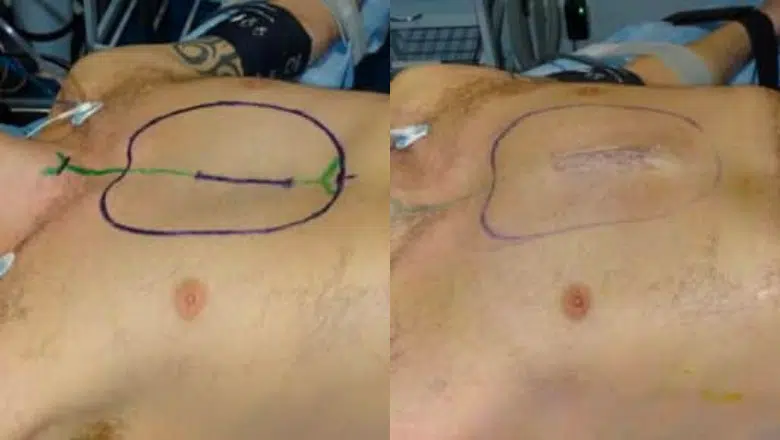
Case 3:
Poland Syndrome Implant - Before & After Photos
Case 1: (left-sided Poland syndrome)
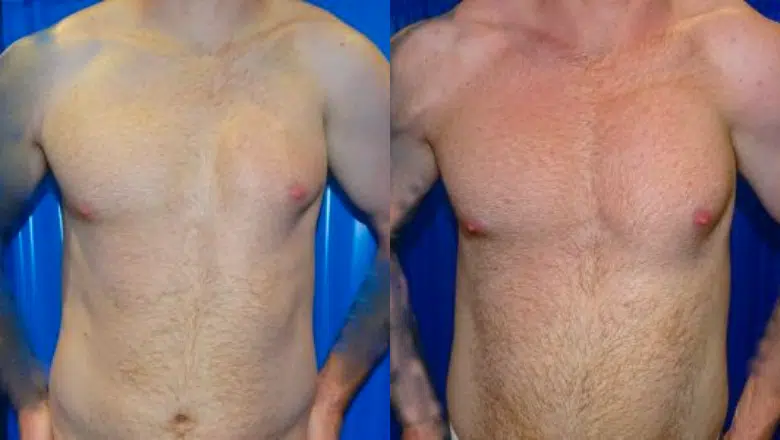
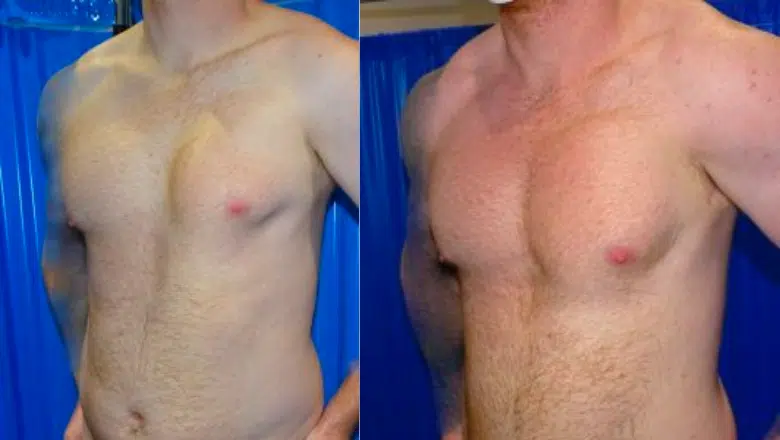
Case 2:
Why choose Centre for Surgery for 3D custom designed implants?
We are dedicated to providing the highest quality care and cutting-edge solutions for patients with chest wall deformities, such as those caused by pectus excavatum and Poland syndrome. Choosing our Baker Street facility for 3D custom-designed implants ensures that you receive the best possible care and outcomes for your condition. Here’s why:
Expertise
Our skilled surgeons and medical staff have extensive experience and specialised training in reconstructive surgery and the use of 3D custom-designed implants. They are committed to staying up-to-date with the latest advancements in the field to provide you with the most effective and innovative treatments available.
State-of-the-art technology
We utilise advanced 3D imaging and computer-aided design (CAD) technology to create precise, patient-specific implants tailored to your unique anatomy. This technology ensures that your implant is a perfect fit, providing optimal support and aesthetic improvement while minimising the risk of complications.
Comprehensive care
We take a holistic approach to patient care, addressing both the physical and emotional aspects of your condition. Our multidisciplinary team of specialists works collaboratively to develop a personalised treatment plan that addresses your specific needs and goals, ensuring the best possible outcome.
Patient-centred approach
We understand that each patient is unique and has individual needs and concerns. Our team is committed to providing personalised care and support, ensuring that you feel comfortable, informed, and confident throughout your treatment journey.
Safety and quality
Patient safety and satisfaction are our top priorities. We adhere to strict protocols and best practices to ensure that every procedure is performed with the highest level of care and precision, minimising risks and promoting optimal results.
Supportive environment
Our state-of-the-art facility is designed to provide a comfortable and welcoming environment for our patients. Our compassionate staff is always available to answer your questions, address your concerns, and provide the support you need throughout your treatment and recovery process.
FAQs
-
What is the best age for a pectus excavatum treatment?The ideal age for surgical intervention in patients suffering from pectus excavation is between the ages of 18 and 24. However, surgical correction for chest deformity can be realised on adults too. There is no maximum age when it comes to benefiting from this innovative technique.
-
When should I have pectus excavatum treatment?The medical practitioner is the one who decides when it is the right time for pectus excavation treatment. Thoracic implants are recommended based on a clinical diagnosis of the surgeon.
-
What are the benefits of pectus implants compared with the Nuss or Ravitch technique?Pectus implants offer a less invasive alternative for the treatment of pectus excavatum, a congenital chest wall deformity, compared to traditional surgical techniques like the Nuss or Ravitch procedures. Here are some of the benefits of pectus implants:
Less invasive: Pectus implant surgery involves the insertion of a custom-made prosthetic device under the skin and muscle layers to correct the sunken chest appearance. This procedure is less invasive than the Nuss or Ravitch techniques, which involve more extensive manipulation of the chest wall structures, such as the ribs and sternum.
Cosmetic focus: Pectus implants primarily address the cosmetic aspects of pectus excavatum, helping to achieve a more natural and symmetrical chest appearance. Although the Nuss and Ravitch procedures can also improve chest wall aesthetics, they are primarily focused on correcting the structural deformity and improving lung and heart function.
Shorter recovery time: As pectus implant surgery is less invasive, the recovery period is generally shorter compared to the Nuss or Ravitch procedures. Patients can often return to light activities within a few weeks and fully recover within a few months. In contrast, recovery from the Nuss or Ravitch techniques can take several months and may require a more extended period of restricted activities.
Reduced risk of complications: The less invasive nature of pectus implant surgery means there is a reduced risk of complications compared to more extensive procedures like the Nuss or Ravitch techniques. Although any surgery carries some risks, the risks associated with pectus implant surgery, such as infection or implant displacement, are generally lower and more manageable than those associated with traditional techniques.
Customisation: Pectus implants are designed and fabricated specifically for each patient based on their unique anatomy and the severity of their condition. This level of customization ensures an optimal fit and aesthetic outcome, while traditional techniques might not always achieve the same level of tailored results. -
Can the suction bell help to avoid the need for pectus implants?The suction bell, also known as the vacuum bell, is a non-surgical treatment option for pectus excavatum that uses negative pressure to gradually lift the sunken chest area. While it can help improve the appearance of the chest in some cases, its effectiveness in completely avoiding the need for pectus implants depends on various factors, including the severity of the deformity, the patient's age, and their compliance with the treatment regimen.
The suction bell is typically more effective for mild to moderate cases of pectus excavatum and when used consistently over an extended period. The device is placed over the sunken chest area, and a vacuum is created, which gently lifts the sternum and surrounding cartilage. The treatment usually requires daily use for several hours at a time, and the duration of the treatment can range from months to years.
Some potential benefits of using the suction bell include:
Non-invasive: The suction bell is a non-surgical treatment option that does not involve incisions, anesthesia, or hospitalization, making it a less invasive alternative to surgery or pectus implants.
Reversible: Since the suction bell does not involve permanent changes to the chest wall, it can be stopped at any time if the patient experiences discomfort or is not satisfied with the results.
Lower risk: Compared to surgery, the suction bell carries a lower risk of complications and side effects.
However, there are some limitations to the suction bell:
Results may vary: The effectiveness of the suction bell in improving the chest wall appearance can vary among individuals, and some patients may not achieve significant or lasting results.
Compliance: Successful treatment with the suction bell requires consistent use and commitment to the therapy, which may be challenging for some patients, particularly younger children or adolescents.
May not address functional issues: The suction bell primarily focuses on cosmetic improvement and may not be sufficient for addressing any functional impairments related to pectus excavatum, such as lung or heart function. -
Can I get pectus implants if I have already had a Nuss or Ravitch procedure?It is possible to get pectus implants after undergoing a Nuss or Ravitch procedure if there is residual chest wall deformity or if the patient is not satisfied with the aesthetic outcome of the previous surgery. However, the decision to pursue pectus implants following a Nuss or Ravitch procedure should be made on a case-by-case basis, taking into consideration the individual's unique anatomy, medical history, and the specific reasons for seeking additional treatment.
In such cases, it is essential to consult with a plastic surgeon specialising in chest wall deformities or reconstructive surgery, who can evaluate your specific situation and determine if pectus implants are an appropriate and safe option for you. They will take into account factors such as the extent of the remaining deformity, the time elapsed since the previous surgery, and the potential risks and benefits of the implant procedure.
If pectus implants are deemed a suitable option, the surgeon will typically use 3D imaging and computer-aided design (CAD) technology to create a custom implant that fits your unique anatomy and addresses the residual deformity. The implant insertion procedure will be performed with care to minimize the risk of complications, considering the previous surgical intervention and any scar tissue that may be present. -
How do I care for the surgical incision?After surgery, you have to take good care of your surgical incisions. You can shower every day as long as you wash the incision area gently. Applying a small amount of soap and rinsing is enough. You are not allowed to immerse yourself in the hot tub for at least four weeks. Examine your surgical incisions daily, until they close completely.
-
Will there be scars?Scars will improve over the course of a few days. Surgical incisions heal well, so you do not have to worry about scars.
-
Are pectus implants safe?Yes, it is. The implant is made of silicone rubber, not gel, and it will not interfere with your body in any way. Also, because no drains are used, the risk of haematoma is also low.
-
Can I still do sports after surgery?Yes, you can, but only after three months, otherwise, you risk complications. You can get back to work after 15 days, but even then you should refrain from lifting more than five pounds. After three months, however, if recovery went smoothly and you didn’t have another follow-up surgery for result refinement, you can start working out.
-
What type of bra should I wear after pectus surgery?In the first days after surgery, you should wear the special bra provided to you by the clinic. Once your breasts start to heal, you can wear your own bras, but make sure you avoid underwire for six weeks. The area will be quite sensitive and underwire can cause injury.
-
Can my child benefit from Poland Syndrome treatment?Poland Syndrome is an aesthetic defect that can take a toll on a child’s mental development, especially throughout puberty, when teenagers are already confused by all the changes taking place in their body. Boys can have this surgery done starting at the age of 13, but girls are advised to wait until their breasts fully develop.
-
Is pectus implant surgery painful?The implant will be placed with the patient under general anaesthesia, so you will not feel anything. However, for the following days, the doctor will administer stronger painkillers to reduce local discomfort.
-
Will I have scars after pectus implant surgery?The edges of the implant are invisible and we only use dissolvable stitches, so that scarring is minimal. For a few weeks, the place of the incision will be red and visible, but in time the scarring will fade. If you are concerned about this, you can apply over the counter scar reduction creams to speed up healing.



